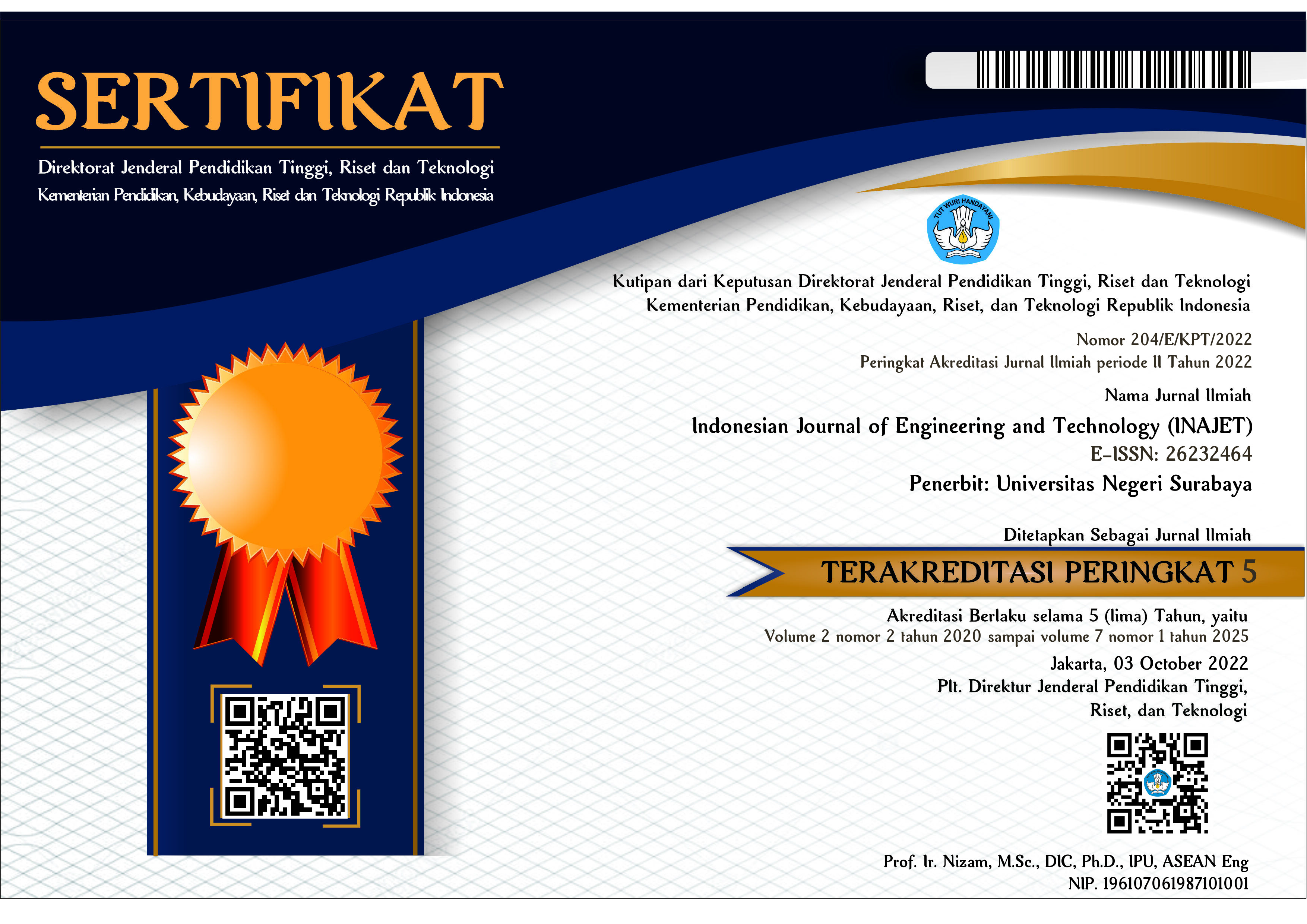Analysis of Feeding, Drinking and Automatic Fecal Cleaning in Quail Cages Based on The Internet of Things
DOI:
https://doi.org/10.26740/inajet.v8n1.p10-18Keywords:
Quail Cages, Precision feeding, Farm efficiencyAbstract
Analyze the effect of the slope of the feeding valve on the consumption of quail feed to determine the optimal angle of inclination, evaluate the effect of the variation in the diameter of the timing pulley on the conveyor belt on the rotation speed and cleaning time of the cage manure to find the most effective pulley size, and study the effect of liquid viscosity on the filling time of the tank using a water pump in order to optimize the liquid filling system in the farm. An applied experimental method with a quantitative approach was used to test the influence of free variables. The data collected including feed consumption, fecal cleaning time, and drinking water filling time were analyzed numerically to obtain valid and objective results. The results showed that increasing the tilt of the feeding valve from 20°, 25°, to 30° increased feed consumption from an average of 348 grams to 725 grams. The timing diameter of the pulley has an effect on the rotational speed and cleaning time, with the small pulley (25 mm) resulting in the fastest cleaning (0.42 minutes) and the largest pulley (50 mm) the slowest (1.38). In addition, the viscosity of the liquid affects the filling time of the 10-liter tank, where ordinary water is the fastest (3.52 minutes), water with 5 vitamins is slightly longer, and the mixture of water with molasses and salt is the slowest (4.31 minutes).
Downloads
Published
How to Cite
Issue
Section
 Abstract views: 132
,
Abstract views: 132
, PDF Downloads: 141
PDF Downloads: 141











